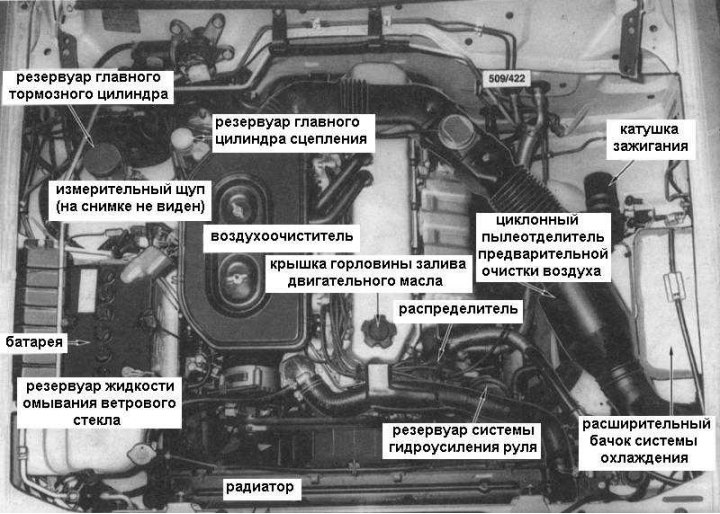2. Jack up the rear of the vehicle and place it on jack stands under the rear axle assembly.
Note. Try to keep the vehicle in a perfectly horizontal position to avoid false readings when measuring fluid levels.
 |  |
 |  |
3. Use a wire brush and rags to clean the areas around the engine oil pan drain plug, and around the manual transmission, transfer case, axle differentials, and grease nipples at the steering pivots and propeller shafts.
4. Install a drain container under the engine oil pan, remove the plug and completely drain the engine oil.
Note. Engine oil is best drained at normal operating temperature. However, care must be taken to avoid burns. Screw the plug back into place and tighten it firmly. Wipe the surface around the cork.
Note. Before screwing in the drain plug of the pallet, check the condition of its sealing gasket, if necessary, replace it.

5. If the oil filter is to be replaced, remove it using a special wrench (see accompanying illustration) and empty into a waste container. Lightly coat the sealing gasket of the new filter with clean oil, clean the seating surface on the engine block, and screw the filter in by hand following the instructions provided.
Note. Before installing a new filter, make sure that the gasket of the old one is not stuck to the surface of the block. If this happens, remove the old gasket.

6. Remove the filler/check plugs from the crankcases of the manual transmission, transfer case and differentials. Using a finger or a bent piece of wire, check the oil levels in the listed units - the level should reach the lower cut of the filler hole. If the level is too high, check the oil for traces of water in it, drain the excess, replace if necessary. If the level is low, add with a grease gun using the correct grade of oil.
After making sure that the oil levels in all units meet the regulatory requirements, screw the filler plugs into place and tighten them firmly. Wipe the crankcase surfaces around the plugs.
7. Remove the plugs from the steering linkage joints and screw the grease nipples into the holes.
8. Pack the tie rod and drive shaft joints with special chassis grease using a grease gun. Do not overdo it - make sure that there is no displacement of covers and seals from their seats.
9. Unscrew the grease nipples and reinstall the plugs in the tie rod joints.

10. Remove the bolt from the flange of each of the steering knuckle assemblies and probe the holes with a piece of wire for water in the knuckles (see accompanying illustration).

11. Remove the plug from the bottom of the clutch dome (see accompanying illustration) and check the clutch for water ingress. Replace the plug by tightening it securely.
12. Using a funnel, pour the required amount of oil of the required grade into the engine. Start the engine and wait for the oil pressure warning light to turn off, then turn off the engine again and after a few minutes check the oil level on the dipstick. Add if necessary.
Note. To avoid initial overflow, first fill in oil half a liter less than the norm (see tables of sizes and adjustments at the end of the guide). Finally add after the initial start of the engine.
13. Carefully inspect the oil filter installation points for signs of leaks (if replaced) and drain plug of the oil pan.
14. Lower the vehicle to the ground and check the units for oil leaks by doing a road test.
Note. Lubricate and check all components in accordance with the vehicle's routine maintenance schedule.
The components of the engine compartment requiring service are shown in the accompanying illustration.
